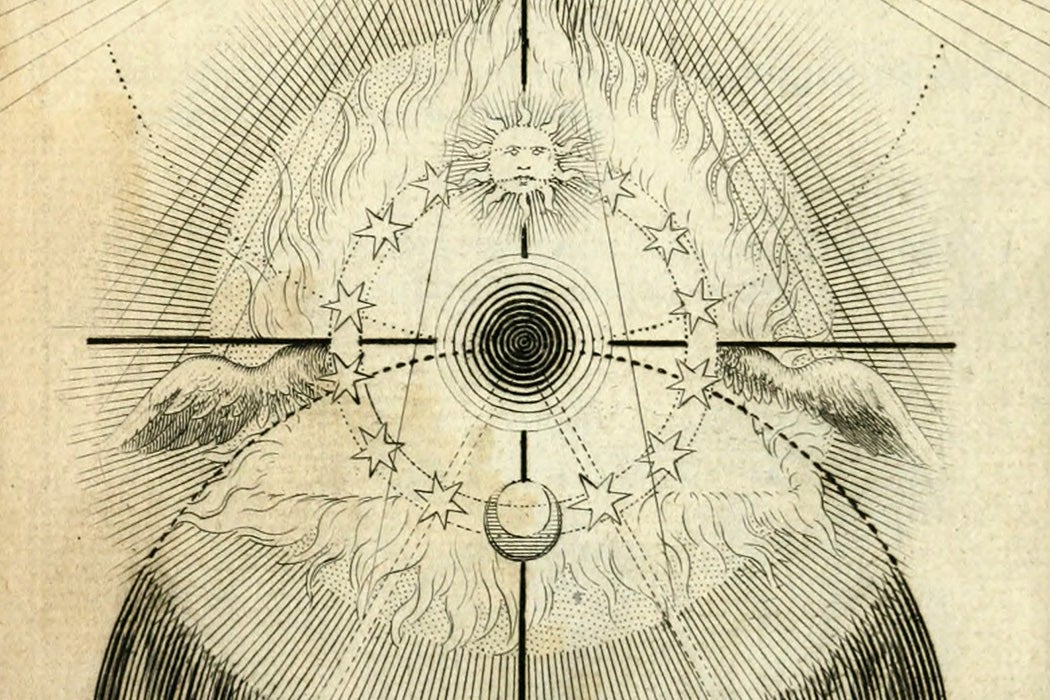“Mysticism” is a slippery word. People may use it to discuss medieval Christian saints’ communion with God, 3,000-year-old Vedic texts, or twenty-first-century Wiccan sex magic. Others use it to attack religious practices they see as irrational or unserious. Leigh Eric Schmidt, a historian of religion, explains the history of the concept.
Schmidt writes that “mysticism” arrived in the English language in the eighteenth century as a derogatory term for Christian fanatics. Some critics dismissed mysticism as a minor sect, associating it with Quakers or contemplative French Catholic Quietists. Others used the term to cringe at early Christians’ painful “bodily exercises.”
Henry Coventry, an eighteenth-century writer of the English Enlightenment, helped bring “mysticism” into general usage. Schmidt quotes him as contrasting “the seraphic entertainments of mysticism and ecstasy” with religion as “a liberal, manly, rational, and social institution.” Coventry argued that mystical religious practitioners—especially women—might believe they were passionately devoted to God, but were actually transferring frustrated sexual love onto an imagined divine object. In fact, he argued, sublimated sexuality made up “the far greatest part of female religion.”
It was only in the middle of the nineteenth century that people began using “mysticism” to describe their own direct efforts to experience the divine. Schmidt focuses particularly on New England. Ironically, some of mysticism’s biggest advocates there were Unitarians—a Protestant denomination closely associated with the kind of liberal rationality Coventry had favored. Starting in the 1830s, Unitarians associated with the Transcendentalist movement began embracing mysticism. Among them were theologian and abolitionist Theodore Parker, writer Ralph Waldo Emerson, and feminist journalist Margaret Fuller. This was a cosmopolitan group eager to try out varied practices from other cultures in the service of a universal spirituality. As Fuller later wrote of herself, they were ready to “plunge into the sea of Buddhism and mystical trances.”
The focus on direct personal experience helped liberal Protestants imagine a future free of sectarianism and—at least in theory—equally open to all of the world’s religions. Unitarian minister Octavius Fronthingham declared that mysticism was “found equally among orthodox and heterodox, Protestants and Catholics, Pagans and Christians, Greeks and Hindoos, the people of the Old World and the people of the New.”
At a time when scientific rationalism was challenging many religious claims, Schmidt writes, the intuitive, irreducible nature of mystical experience was also an “intellectual shield” against a purely materialist worldview.
Weekly Newsletter
Mysticism continued to thrive in the twentieth century. William James’s two-volume The Varieties of Religious Experience (1902) presented an influential model of universal direct religious experience. And countercultural experimenters in the 1960s and beyond leaned heavily on this view.
But, Schmidt writes, since the 1970s, the concept of mysticism has faced new criticism. Scholars like Wayne Proudfoot and Grace Jantzen warned that it irresponsibly removes religious experience from historical and cultural contexts, and from political analysis of power. By the time he was writing, in 2003, Schmidt could declare that “there is hardly a more beleaguered category than ‘mysticism’ in the current academic study of religion.”







